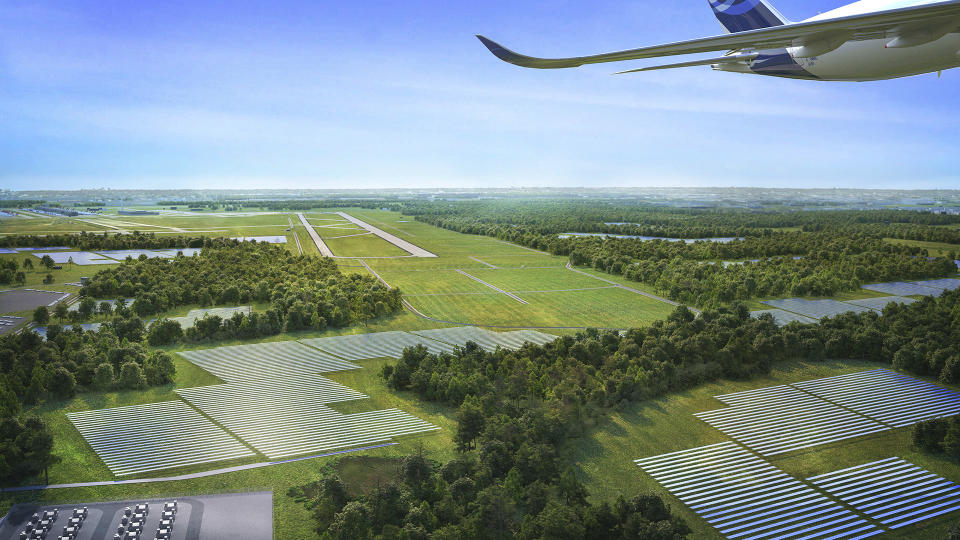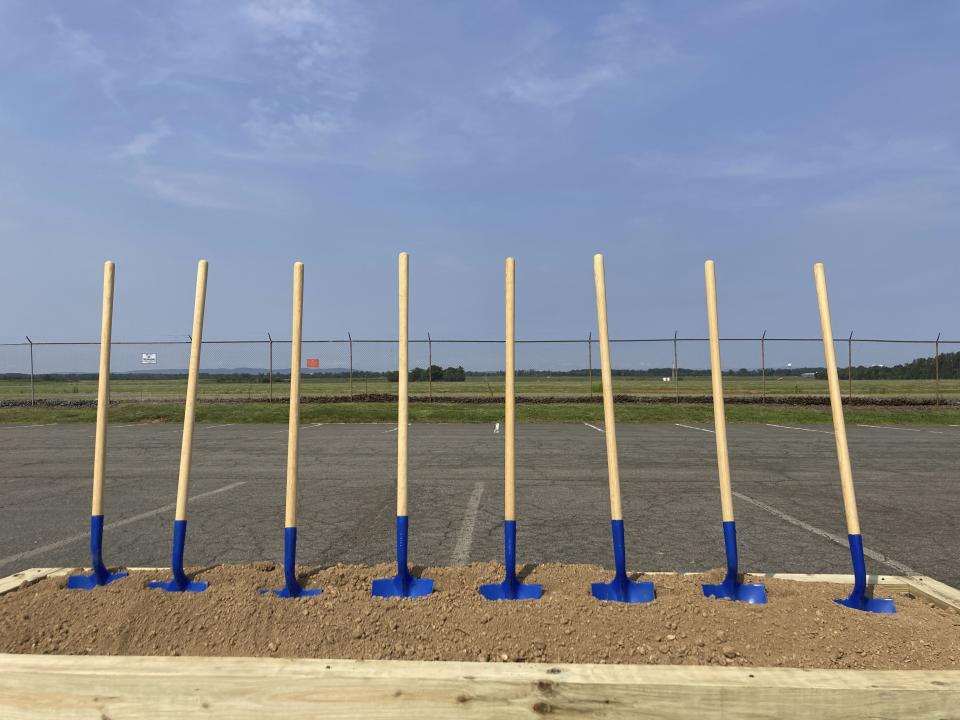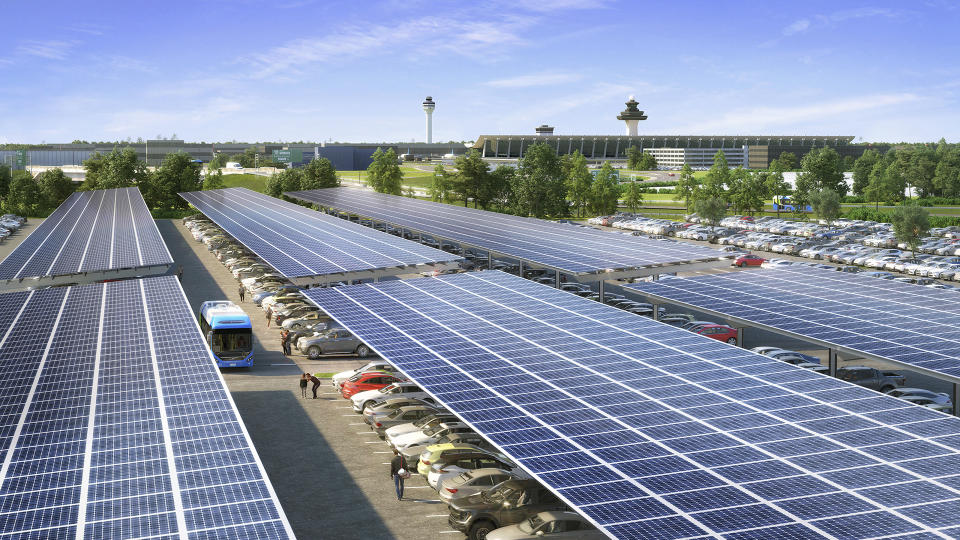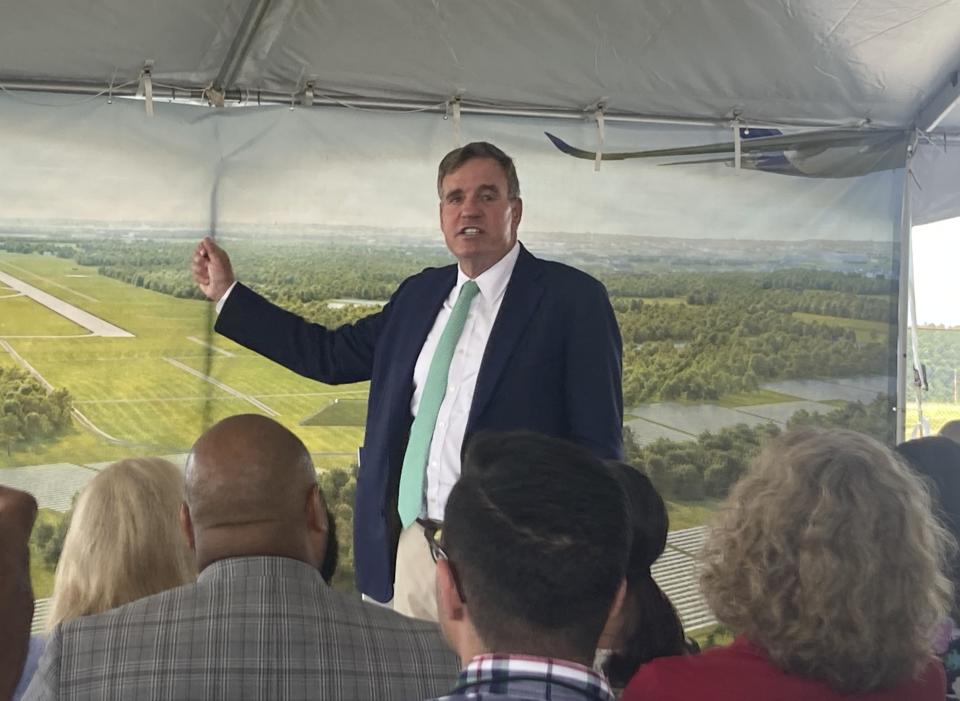Solar panels to surround Dulles Airport will deliver power to 37,000 homes
CHANTILLY, Va. (AP) — Travelers taking off and landing at Dulles International Airport outside the nation’s capital will soon see an array of 200,000 solar panels laid out near the runways — the largest renewable energy project ever built at a U.S. airport.
Dominion Energy and the Metropolitan Washington Airports Authority ceremonially broke ground on the 835-acre project Tuesday.
The solar farm is just a small part of a huge push by Dominion to add 16,000 megawatts of solar capacity — enough to power 4 million homes — by 2035 as it seeks to comply with a state law requiring 100% of its non-nuclear energy production to be zero emission by 2045.
Rural counties in Virginia, though, are pushing back against the solar expansion, as residents complain about the loss of farmland, wrecked viewsheds and construction noise. In recent months, Henry, Pittsylvania, Clarke and Shenandoah counties have all taken steps to restrict or regulate new solar projects.
Bev McKay, a supervisor in Clarke County, said it's unfair rural counties bear the brunt of hosting solar farms.
Urban areas “are huge users of electricity and there is no reason that the urban areas cannot generate their share of solar energy instead of depending on the rural areas to do it for them,” he said at a Board of Supervisors meeting last month, according to the meeting minutes.
Others bristle at the increased costs. Dominion and the State Corporation Commission have estimated a 72% increase in electricity costs between 2020 and 2035. And Gov. Glenn Youngkin has suggested the law mandating clean energy production should be revisited.
At Tuesday’s groundbreaking, U.S. Sen. Mark Warner, D-Va., praised local leaders for getting the Dulles project done and spoke of the need to build such projects. But he acknowledged in an interview that his office is receiving increasing complaints about solar farms, and he said the solar projects are just part of the solution to meeting energy needs in a sustainable way.
“This is an issue that's not going away and that’s why you can’t have a single solution,” he said.
Virginia is one of 10 states, along with the District of Columbia, that mandates 100% clean or renewable energy production with deadlines ranging between 2030 and 2050, according to the National Conference of State Legislatures. Solar energy is a large part of the state's plan, but not the only part. Virginia's law allows nuclear energy to be part of Dominion's portfolio, for example.
The Dulles project adds 100 megawatts of solar generating, plus 50 megawatts of battery storage, enough to power about 37,000 homes. It is expected to create 300 jobs and be completed by 2026.
Dominion says it has already added about 2,000 megawatts of solar power in operation. It has another 7,000 megawatts, including the Dulles project, in various stages of development. That means Dominion will still need to find dozens of additional sites across the state in coming years to reach its 16,000 megawatt target.
Edward Baine, president of Dominion Energy Virginia, said the company works closely with local governments to ensure the projects are palatable. For example, he said some of the earliest projects lacked vegetative buffers to minimize the visual impact. Now that kind of buffer is standard.
“We want to make sure those counties are satisfied” with how the projects are developed, he said.
For the Dulles project, though, its visibility is a feature, not a flaw. Officials cited the symbolic importance of a massive solar project that will be visible to travelers at the airport, which serves as the region's hub for international travel.
“The image that they now will see when they look out the window upon landing and see the solar panels that have been installed at this airport is exactly the type of forward image we want to make sure that the world sees,” Fairfax County Board of Supervisors Chairman Jeff McKay said.





